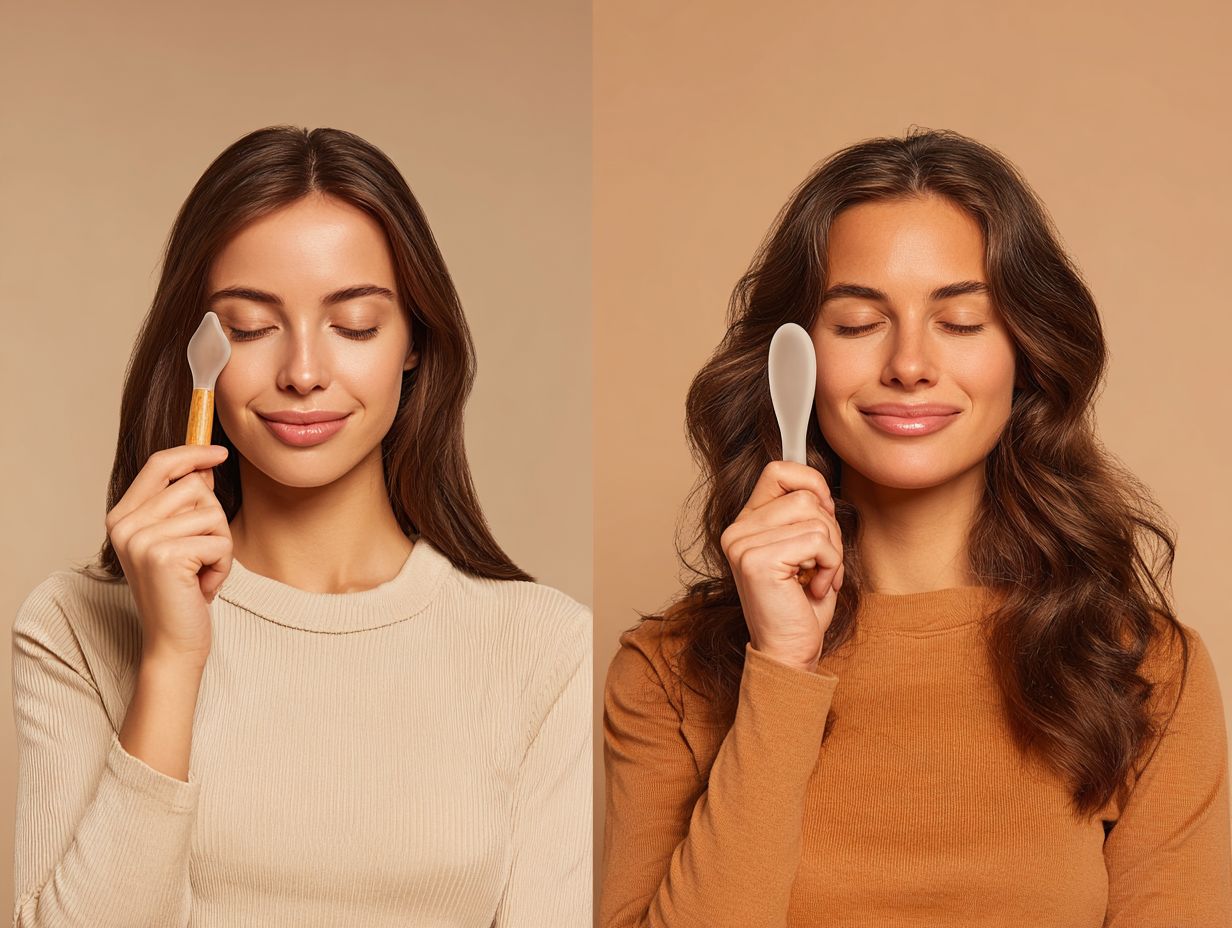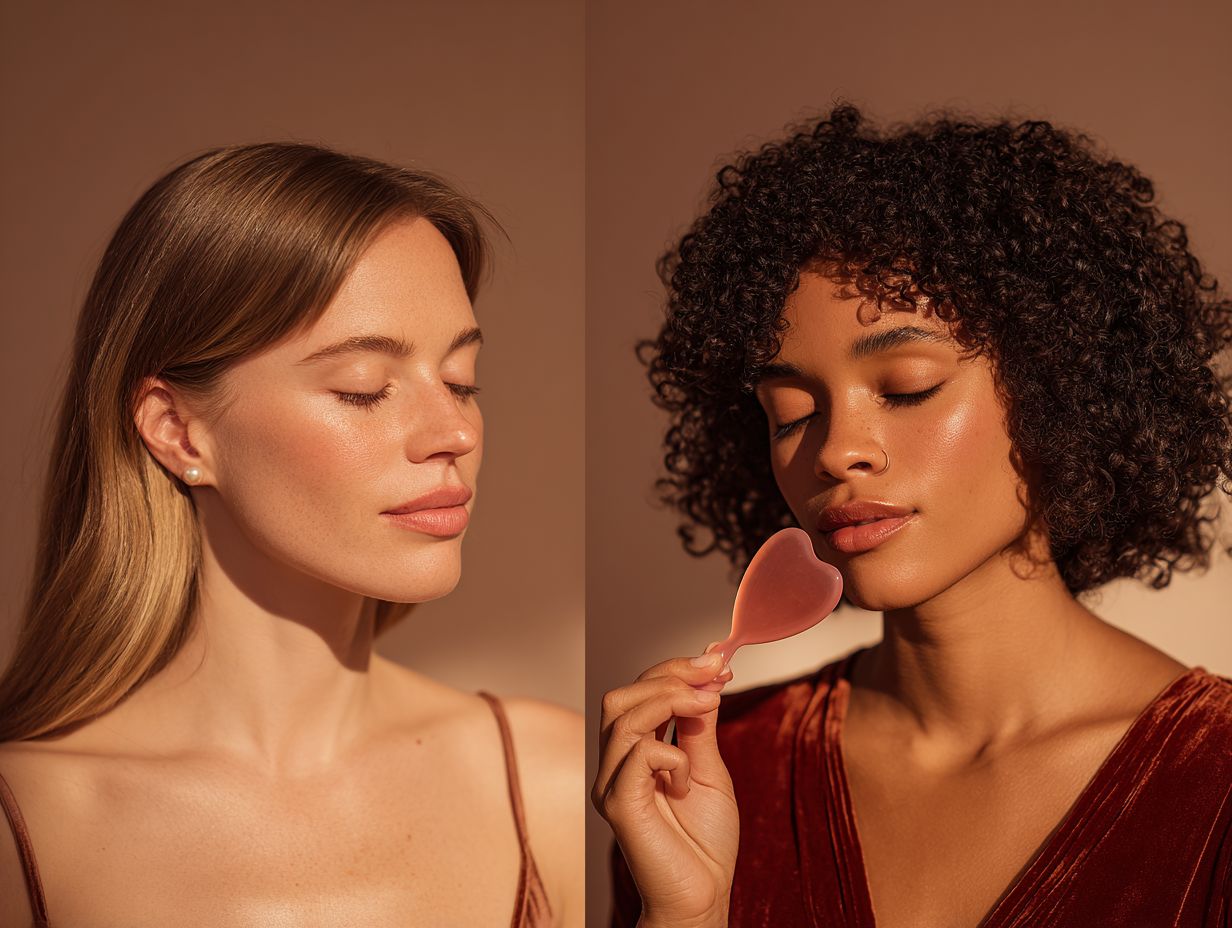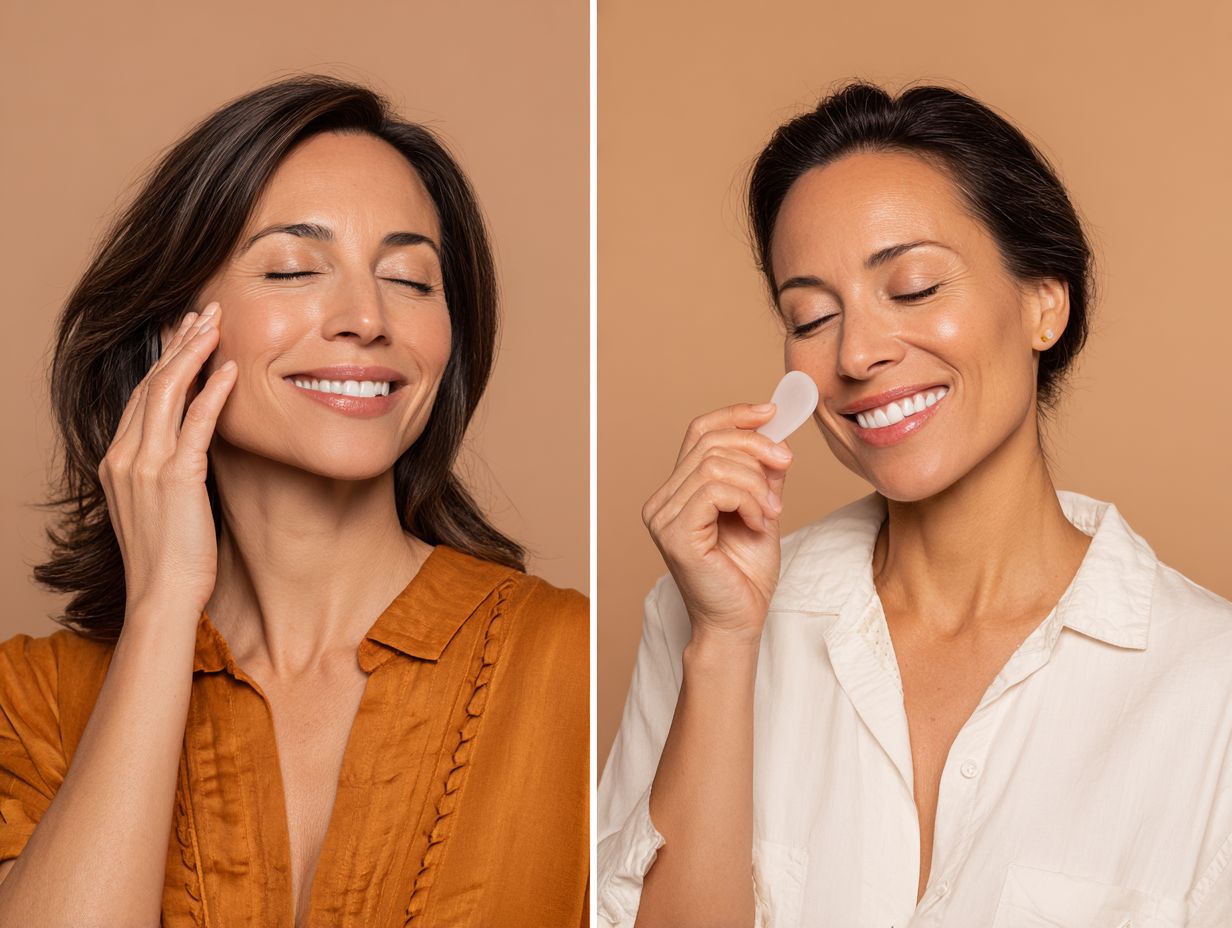In the quest for youthful radiance, two popular techniques often emerge in conversation: Face Yoga and Gua Sha. As someone invested in holistic skincare and skin rejuvenation, I find it essential to explore which method truly delivers remarkable results. Each practice boasts unique benefits and approaches to enhancing skin health and aesthetics, contributing to overall wellness practices. Join me as we delve into the fundamentals of each technique, compare their effectiveness, and uncover how to choose the right one for your skincare journey.
Understanding Face Yoga

I practice Face Yoga, which consists of a series of targeted exercises aimed at toning facial muscles and enhancing overall skin vitality through natural lifting techniques.
What is Face Yoga?
I incorporate Face Yoga into my routine by performing specific exercises that engage various facial muscles, which enhances circulation and promotes relaxation. This practice has its roots in ancient traditions from India and Japan, seamlessly blending time-honored techniques with modern wellness approaches.
For instance, I frequently practice exercises like cheek lifts, where I smile widely while gently pressing my fingers against my cheeks and holding the position for a few seconds to tone the muscles, promoting facial contours. Additionally, I utilize the forehead smoothing technique, which involves placing my palms on my forehead and sliding them outward to help reduce tension and fine lines, providing an effective anti-aging solution.
By integrating these movements into my daily routine, I not only foster a youthful appearance but also promote mindfulness and relaxation.
Benefits of Face Yoga
Practicing Face Yoga has led me to noticeable improvements in skin elasticity, effectively reducing signs of aging and enhancing my overall facial aesthetics with increased facial toning. To begin incorporating Face Yoga into my routine, I dedicate just 10-15 minutes each day to targeted exercises.
For example, the `V’ exercise requires me to form a `V’ shape with my fingers and gently press upward on my cheeks while smiling, which helps lift sagging skin. I also utilize tools like the Face Yoga App, which provides guided routines tailored to my specific goals and incorporates facial acupressure techniques, and the ability to track before-and-after progress serves as great motivation.
Many users have reported experiencing a visibly firmer complexion within just four weeks, along with increased relaxation and reduced tension in their facial muscles.
Exploring Gua Sha
I utilize Gua Sha, an ancient Chinese technique that involves the use of smooth stones to massage the face. This method effectively stimulates blood flow and promotes lymphatic drainage, offering therapeutic benefits for overall skin health.
What is Gua Sha?

Gua Sha involves using a flat tool to scrape along the skin, and I prefer utilizing jade or rose quartz for their added benefits, enhancing facial glow and skin smoothing. To perform Gua Sha effectively, I start by applying facial oil to ensure a smooth glide, contributing to beauty rituals.
I hold the Gua Sha tool at a 15-degree angle and gently scrape from the center of my face outward and upward, focusing on effective puffiness reduction.
I pay particular attention to areas with tension, such as the jaw and forehead, dedicating about 2-3 minutes to each area. Unlike Face Yoga, which incorporates muscle movements to tone the face, Gua Sha primarily promotes lymphatic drainage and circulation.
I find that regular sessions-ideally two to three times a week-can significantly enhance my skincare routine and improve my skin texture, making it an essential part of my self-care regimen.
Benefits of Gua Sha
As a user of Gua Sha, I often notice immediate benefits such as reduced puffiness and improved skin tone, supported by evidence indicating increased blood circulation and enhanced skin vitality.
Research shows that Gua Sha can enhance blood circulation by up to 60%, which is quite significant for skin health. Additionally, I find that regular use contributes to lower stress levels, as the gentle scraping motion promotes relaxation and stress relief.
In my experience, I see increased skin vitality within a few weeks, particularly when I incorporate nourishing oils into my routine.
To begin, I recommend performing Gua Sha three times a week for about five to ten minutes, concentrating on areas like the jawline, neck, and forehead to achieve the best results.
Comparative Analysis
In my exploration of Face Yoga and Gua Sha, I have found that while both techniques are distinct, they complement each other effectively.
Each method offers a unique approach to promoting healthier skin.
Effectiveness of Techniques
Research indicates that Face Yoga can enhance facial muscle tone by as much as 30%, while Gua Sha may effectively reduce puffiness by over 50% in a matter of minutes, showcasing the efficacy of these techniques.
To integrate these techniques into my daily routine, I start by committing just 10 minutes to Face Yoga each day. I focus on specific exercises, such as cheek lifts and jaw releases, targeting the areas I wish to tone.
For Gua Sha, I select a high-quality jade stone and apply a facial oil to ensure smooth gliding. I then spend 5 to 10 minutes gently scraping my skin in upward motions.
Regularly combining both practices can lead to impressive results over time, as evidenced by testimonials from users who report a more youthful appearance and enhanced skin health.
Skin Health and Aesthetics

Both practices significantly contribute to skin health, with Face Yoga enhancing muscle tone and Gua Sha effectively targeting lymphatic drainage and blood circulation.
Face Yoga consists of specific exercises designed to improve facial muscle tone, leading to a more lifted appearance. For example, I recommend the ‘Cheek Lifter’ exercise, where you smile widely while placing your fingers on your cheeks for added resistance.
On the other hand, Gua Sha utilizes a smooth, flat tool-typically made of jade or rose quartz-to gently stroke the skin, beginning at the center of the face and working outward.
To maximize the benefits of both techniques, I suggest practicing Face Yoga daily to build muscle strength and using Gua Sha 2-3 times per week to enhance circulation. Documenting before-and-after photos can effectively illustrate the clear improvements in skin elasticity, vibrancy, and facial appearance over time.
Personalization and Preferences
The decision between Face Yoga and Gua Sha depends on my individual skin type, personal preferences, and the specific outcomes I wish to achieve.
Choosing the Right Method for You
When deciding between Face Yoga and Gua Sha, I consider several factors such as time commitment, specific skin concerns, and personal enjoyment.
First, I evaluate my daily schedule. Face Yoga requires a commitment of about 10-15 minutes each day, which makes it ideal for those who appreciate a structured routine. On the other hand, if I prefer a more time-efficient option, Gua Sha typically only takes around 5-10 minutes per session while still delivering effective results.
Next, I assess my skin concerns. I find that Face Yoga can improve elasticity and reduce the appearance of fine lines, whereas Gua Sha is particularly effective for lymphatic drainage and minimizing puffiness.
Lastly, I remain mindful of what I enjoy. I make it a point to experiment with both methods to determine which one I look forward to, ultimately enhancing my overall skincare experience.
Frequently Asked Questions
What is the difference between Face Yoga and Gua Sha?

Face Yoga is a natural and holistic approach to facial exercises that are meant to improve the overall health and appearance of the face. Gua Sha, on the other hand, is a traditional Chinese healing technique that involves using a tool to scrape the skin, promoting blood flow and reducing inflammation.
Which one delivers better results for anti-aging?
While both Face Yoga and Gua Sha can have anti-aging benefits, Face Yoga is specifically designed to target the facial muscles and improve skin elasticity, which can help reduce the appearance of fine lines and wrinkles, ultimately enhancing facial aesthetics. Gua Sha can help with lymphatic drainage and reducing puffiness, but it may not have as significant of an impact on anti-aging.
Can Face Yoga and Gua Sha be used together?
Yes, they can complement each other and be used together for even better results. Gua Sha can help relax facial muscles and release tension, making it easier to perform Face Yoga exercises. Incorporating both practices into your skincare routine can lead to improved tone, texture and radiance in the face.
Which one is more effective in reducing dark circles and puffiness?
Gua Sha may be more effective in reducing dark circles and puffiness, as it can help with lymphatic drainage and promote blood flow. However, Face Yoga exercises that target the eye area can also help improve circulation and reduce puffiness. Combining both techniques may provide even better results.
Is there a specific age range for seeing results with Face Yoga or Gua Sha?
Both Face Yoga and Gua Sha can be beneficial for people of all ages. However, the results may vary depending on individual factors such as skin type and overall health. It is recommended to start incorporating these practices into your routine as early as possible for long-term benefits.
Are there any risks or side effects to using Face Yoga or Gua Sha?
Both Face Yoga and Gua Sha are non-invasive practices and are generally safe for most people. However, as with any skincare technique, there may be potential for irritation or allergic reactions. It is important to use proper techniques and avoid using too much pressure or force to avoid any potential risks or side effects.


